Pros
-
Can be used both wired and wirelessly
-
Reasonable audio quality for the price
Cons
-
Cannot be folded up when not in use
But if you're looking for a good pair of wireless headphones at a good price, it's hard to top the JLab Audio Omni Wireless Headphones (MSRP: $99.99). We're big fans of these headphones for a few reasons: They're comfortable to wear, provide very good sound quality both wired and wireless, and don't cost nearly as much as the competition.
The plastic build leaves a little to be desired, but that's a small concession to make for features that usually cost at least twice this much. If you're looking for one of the best values you can get, these have to be near the top of your list.
The Looks
More than meets the eye

From top to bottom, the Omnis are packed with thick padding for excellent comfort.
At first glance, there isn’t much that’s very eye-catching about these JLabs. They have a simple, nondescript design that doesn’t shout for attention, instead focusing on function over form. They're only available in one color—“Black Pearl”—but it's a traditional look that goes well with everything from phones to laptops.
{{amazon name="Omni By JLab Premium Folding Bluetooth Wireless Over-Ear Headphone with Mic & Carrying Case, Black Pearl", asin="B00MCCN8E4", align="right"}} Each earcup has thick “cloud foam cushions” that are covered in eco-friendly leather. Unfortunately, they aren't very large, which means they might clamp a little too tightly on anyone with bigger ears—like myself. It was never bad enough to be a deal-breaker, but after long sessions (2-3 hours) I had to take a break. Meanwhile, there's just enough padding on the headband for the headphones to rest gently on your head without causing problems.
The most notable design touch is a small knob on the outside of the right earcup lets you control your music while you're wireless. The small, LED-lit knob will glow blue when you've connected to a device, and between the central button and rotating knob, you'll have access to 11 functions like play, pause, volume, etc. Like the rest of the build, the knob is made from plastic and doesn't feel very sturdy, but it certainly gets the job done.
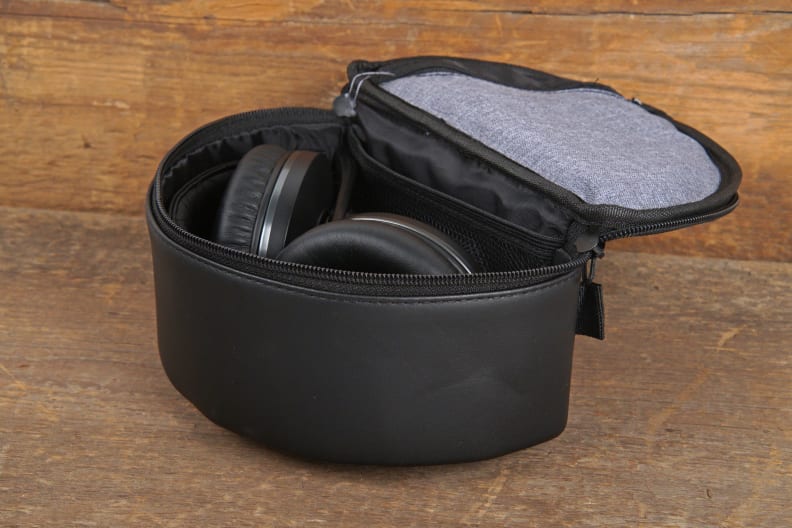
While the carrying case is an obvious perk, it's large size means it's not very travel-friendly.
Unlike some wireless headphones, the JLab Omni can be used wired as well. The flat, tangle-resistant cable houses a mic and a one-button remote to handle the controls for answering calls, playing/pausing music, and skipping/rewinding tracks. The lack of volume controls here is a disappointment, as the knob doesn't function at all when wired.
As you'd expect given the low price point, the Omnis don't come with many accessories. Other than the essentials—a USB to micro USB cord to charge the built-in rechargeable battery and the 4.5 foot audio cable—they come with just a travel case. It’s plush and should provide a fair amount of protection while you're traveling, but it’s also pretty bulky. If you do plan on packing them away you’ll have to sacrifice some real estate in your luggage to make sure they fit.
The Sound
Rich, balanced, and free
Whether you’re planning to go wired or wireless, the most important thing is that your music sounds great. While switching to wireless will result in an unavoidable loss in quality—which you may or may not be able to discern for yourself—the Omni Wireless have a rich, balanced sound that doesn’t play favorites when it comes to genres.
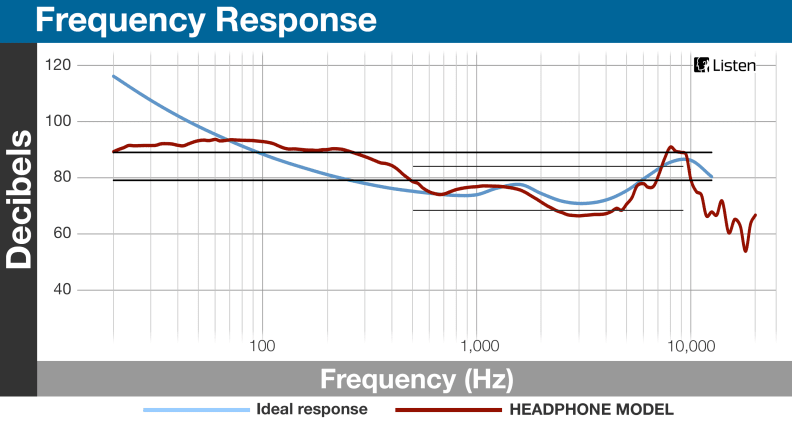
The Omnis do a good job of coming close to an equal-loudness contour.
When we measured how the Omnis reproduce sounds across the audible spectrum, we came up with something that pretty closely matches an equal-loudness contour—represented by the blue line below. That means the difficult-to-hear sounds have been given a boost so everything can be heard equally well. Sub-bass and bass sounds don’t get quite as much of a boost, so if you prefer the person sitting next to you to feel your music in their chest, you’ll have to look for some headphones with a little more oomph. Otherwise, you can expect an every-man’s performance that will sound great no matter if you listen to “Moment of Clarity” by Jay-Z or the hit “Sandstorm” by Darude.
{{spotify 'spotify:track:3XWZ7PNB3ei50bTPzHhqA6'}}
One issue we did have is that the Omnis don't block much ambient sound from getting in. The deep sounds of the subway or bus engines on your commute won't be blocked at all and even the general hubbub of the street will only get the slightest reduction. You'll have much better luck at your desk, where the Omnis will easily overpower normal office chatter. Take care not to crank the volume too high though, otherwise you’re likely to cause serious damage to your ears.
Wireless
The Omni Wireless use Bluetooth 4.0 to connect to your phone, laptop, speaker, or other device and will beam your music about 30 feet before you start to notice connection issues. That distance will be cut down if you move between walls, but otherwise you'll be living the cordless life.
JLab Audio expects users to get up to 15 hours of playback before they’ll need to recharge the onboard battery, which lined up fairly well with our experience. It doesn’t last as long as some of the other wireless headphones we’ve seen lately, but at a fraction of the price, it’s pretty safe to say that it’s worth the sacrifice.
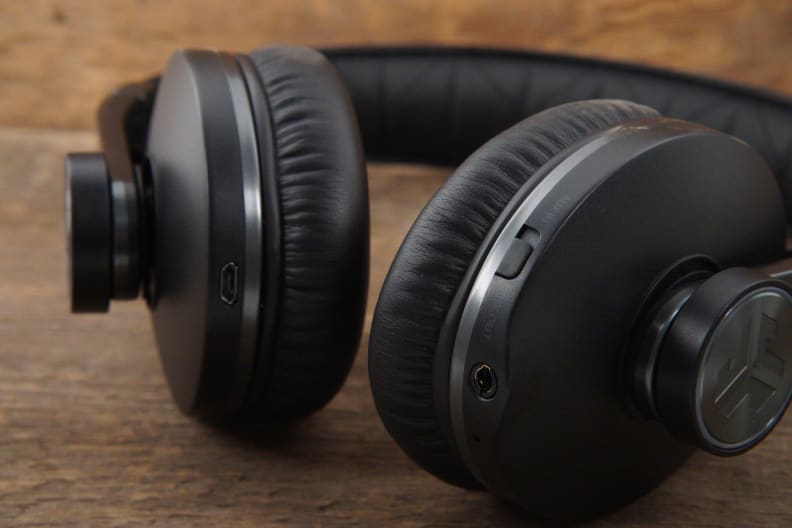
You'll find the charging and audio port on the bottom of the earcups as well as a switch for aux in/out.
The Bottom Line
If you’re looking for wireless over-ears, look no further
There’s a reason we awarded these headphones a Best of Year award for 2015. For $100—less if you can find them on sale—the Omni Wireless are great for anyone that doesn’t want to sacrifice comfort or performance for that lower price tag.
These are great everyman headphones that can tackle most music genres head on without issue thanks to a balanced, consumer-friendly sound profile. The plastic build might make some people pause, but they feel sturdy enough that unless you're especially tough on your gadgets, you shouldn't have a problem making them last for a long time to come. Throw in the ability to detach the cord and go wireless for 15-hours per full charge and you've got a compelling case for treating yourself and picking them up for yourself.
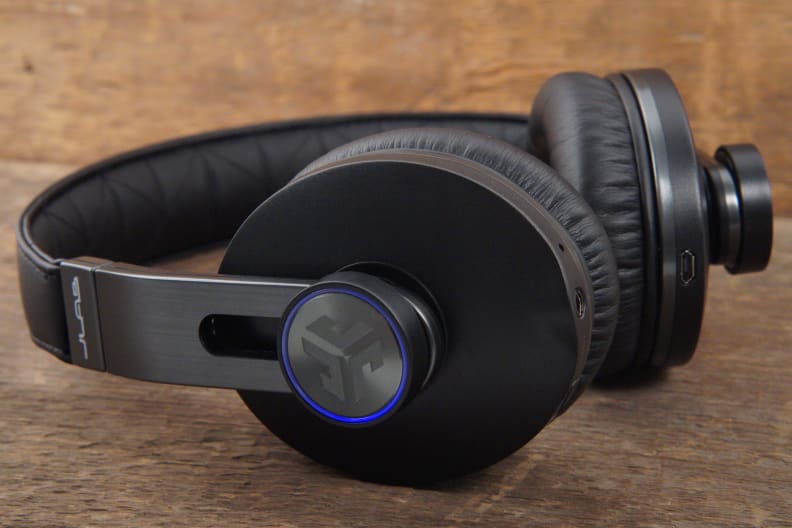
The wireless control knob on the side of the earcup is lit blue when turned on and connected.
If you want to step up the quality a bit and don't mind losing wireless, then we’d recommend taking a look at the Beyerdynamic Custom One Pro Plus (MSRP: $199.99). Even on sale they’ll cost almost twice as much as the Omnis, but if you’re an audiophile that likes to micromanage, these are the cans for you. With four channels to customize your sound and a completely modular design that can be taken apart and fitted to your specifications, it’s easy to see why we like them so much.
{{amazon name="Sony MDRV6 Studio Monitor Headphones with CCAW Voice Coil", asin="B00001WRSJ", align="right"}} If you want similarly priced over-ears but want a more flat, studio-friendly response, there’s one old—yet supremely reliable—choice: the Sony MDR-7506 (MSRP: $130.00). These provide a nice, flat response across the spectrum, are frequently found for under $100, and are trusted by professionals all over the world.
Still, as long as you’re okay with a slightly lower build quality, it’s hard to look past the tremendous value afforded by the Omni Wireless. They’re comfortable, sound fantastic, and the ability to go wireless is simply not something we typically see in headphones at this price point. If you don’t want to spend a lot, but still want to go cordless, the JLab Audio Omnis are the way to go.
The Insides That Count
We wouldn't blame you if you thought the Omni (MSRP: $99.99) from JLab Audio were too good to be true. With a stellar frequency response that is remarkably close to an equal-loudness contour, average isolation, and imperceptible distortion, it's hard to believe they cost as little as they do. It's even more unbelievable when you consider they also use Bluetooth 4.0 to deliver impressive wireless sound quality.
They might seem like lofty claims, but we have the numbers to back it up. Here's our detailed look into the science behind how the Omnis performed.
Frequency Response
When we measure frequency response, we start with a parent signal of 82dB and measure the response the headphones produce across the audible spectrum. Most headphones fall in one of two categories: a flat studio response or something closer to an equal-loudness contour. The Omnis opt for the latter and for the most part hit the mark fairly well.

The Omnis do a good job of coming close to an equal-loudness contour.
An ELC—represented by the blue line above—means the harder to hear frequencies are boosted so the entire spectrum can be heard equally as well by your average human listener. Instead of opting for matching an ELC completely however, the Omnis hardly boost sub-bass and bass sounds at all, instead keeping them relatively flat at 92dB until well into the midrange sounds.
From there the frequency response matches the general idea of an ELC fairly closely, with a small boost around 1.5kHz and again as sounds enter the harmonic range. Overall, these seem purposefully tuned to try and match the broadest range of music.
Distortion
Much like Tracking, almost every headphone we get will have some level of distortion interfering and mucking up your music. While nobody wants fuzzy, crackling sounds disrupting their tunes, it's actually fairly uncommon for a headphone to register enough distortion to be audible to the average person.
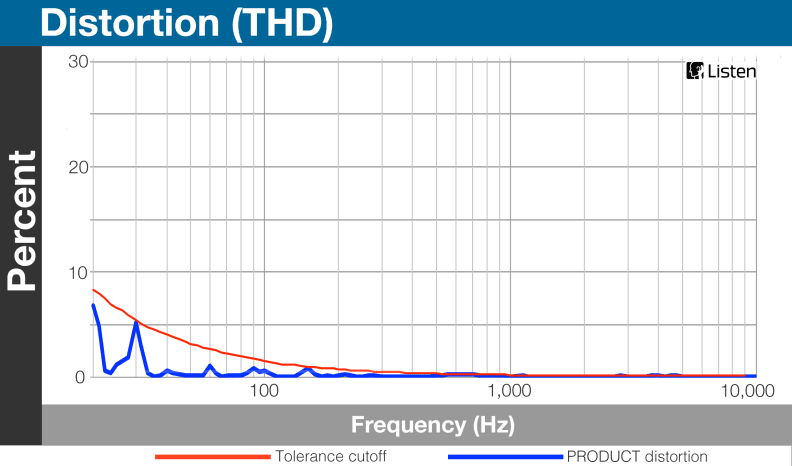
The measured distortion never crossed the audible threshold, meaning the vast majority of users will never notice fuzzy, crackling sounds.
The red line in the chart above represents the acceptable bounds before distortion becomes audible. As you can see, from sub-bass to the high frequencies, the Omnis results almost unanimously stayed below the limit. Meaning you can listen to your music without ever having to fear mechanical sounds compete with "Hello" by Adele.
Passive Isolation
Even if a pair of headphones are not playing music, they'll still be able to block some ambient sound from leaking in thanks to the how tight the fit is, how thick the padding on the earcups are, and other miscellaneous factors. If the heapdhones don't feature active noise cancellation, we use this passive isolation result in order to determine how much of the world around you will leak in and disrupt your music.
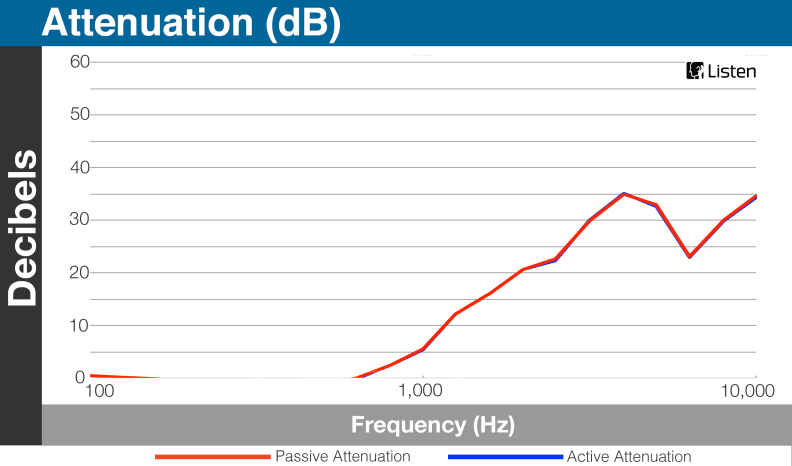
The higher the red line goes, the more the relative volume of those frequencies will be lowered.
The Omnis performed fairly on average in this regard. Sub-bass, bass, and most midrange sounds will continue unimpeded, which means you might want to reconsider using the Omnis during your commute. You'll still be able to hear the roar of bus engines, the subway, and the general hubbub of a busy city street even while wearing the Omnis.
They do much better at blocking higher frequencies, sometimes lowering the relative volume to half or as quarter as loud. The bad news? There isn't a lot of ambient sounds that register that high for the Omnis to successfully block.
Of course, playing music will cut down on your awareness of outside sound, but take care not to crank the volume too high, otherwise you might cause some permanent damage to your hearing.
Tracking
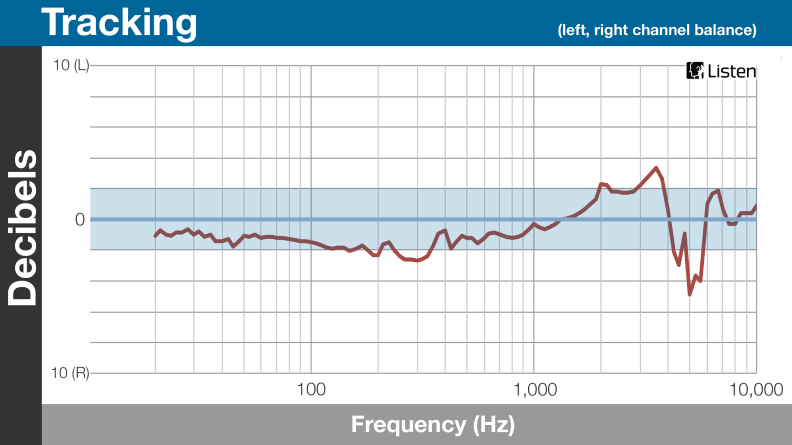
It'll be practically impossible to notice any kind of difference between the right and left channels while listening to your music.
If you've ever gotten a truly bargain pair of headphones you might've noticed one side always seems to sound louder than the other. Almost every headphone will have some minor issues with tracking, but we account for that with an acceptable threshold (marked in blue in the above chart). If the tracking result falls into this area, it's safe to say the average user isn't going to notice anything strange in how their music sounds.
As you can see, the Omnis had an excellent tracking performance, barely breaking out of the acceptable bounds until around 5kHz. Even though they extend relatively far past the bounds in those spots, the frequencies are high enough that it's unlikely you'll notice them anyway.
Meet the tester
Coming from Buffalo, NY, Nick studied media production and arts journalism. When he’s not writing about tech Nick can be found playing video games and keeping up on the latest in pop culture.
Checking our work.
Our team is here for one purpose: to help you buy the best stuff and love what you own. Our writers, editors, and lab technicians obsess over the products we cover to make sure you're confident and satisfied. Have a different opinion about something we recommend? Email us and we'll compare notes.
Shoot us an email




